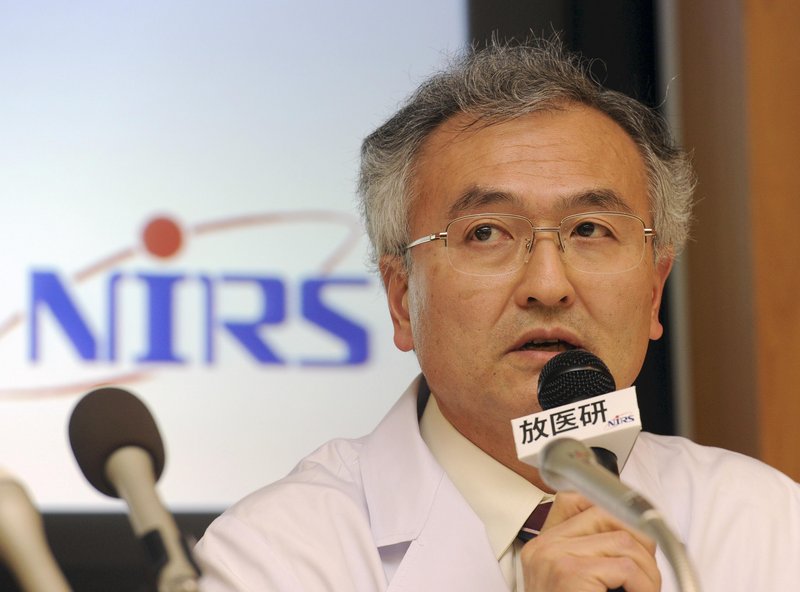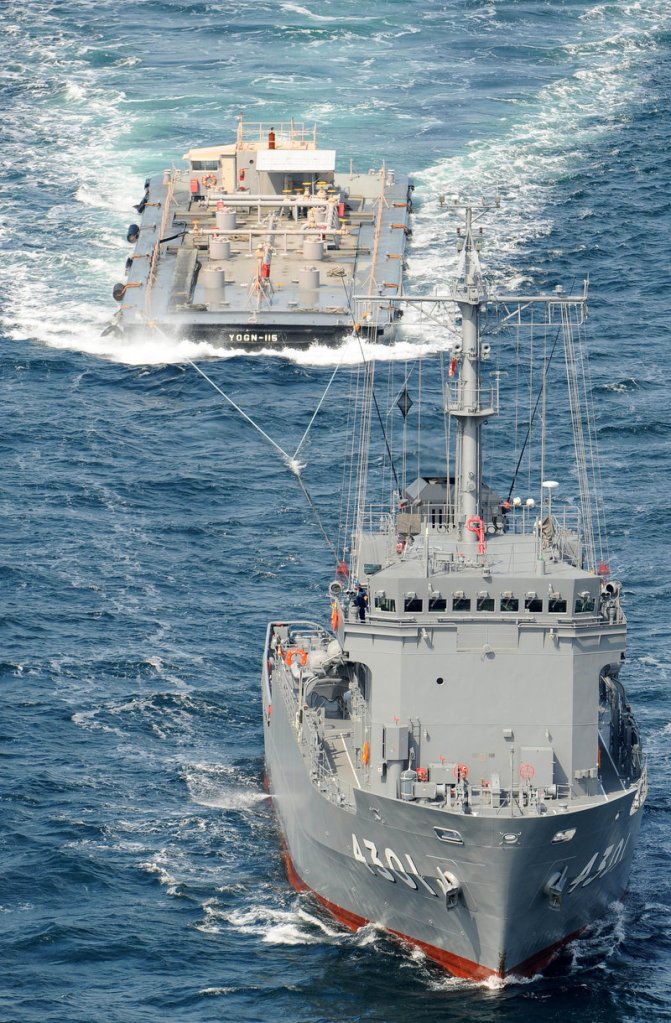TOKYO – Water used to douse ultra-hot reactors at the Fukushima Dai-ichi nuclear power complex showed fresh signs of a possible radiation leak from the reactor’s core Friday, as Japanese officials expanded the evacuation zone around the crippled plant.
Water in a turbine building was so radioactive that it gave leg burns to three workers and reignited fears that the hazardous material could only have come from inside reactor unit 3’s primary containment building or through its main steam system.
That plant is of special concern because it uses mox, a fuel that contains extremely dangerous and long-lasting plutonium in addition to uranium. A leak directly from inside the reactor threatens immediate harm to any workers attempting repairs, while raising the prospect of much longer-term contamination of the facility and surrounding area.
The plant’s owner, Tokyo Electric Power Co., also said it was switching to fresh water to cool reactor cores in units 1 and 3 because of worries that salt from the seawater might have formed thick crusts around the nuclear fuel rods. Those crusts could block the cooling water and allow heat to build up again. Two U.S. Navy barges carrying fresh water are heading to the area to help in the cooling efforts, Japanese authorities said; the ships are expected to arrive in about three days.
One nuclear power expert said that iodine-131 and other contaminants were found in water outside units 1 and 2, which could point to leaks from the primary containment buildings there as well. Because of the relatively fast pace of decay of iodine-131, it would most likely be coming from inside the reactor vessels rather than from the used nuclear fuel rods in storage pools, which are older.
Actual conditions inside four of the complex’s six reactors remain murky; the International Atomic Energy Agency said pressure readings at units 2 and 3 were “unreliable,” for example, because of possible damage to the sensors. What was clear was that the battle to regain control of the reactors was far from over.
“The situation at the Fukushima Dai-ichi power plant is still very grave and serious,” Prime Minister Naoto Kan said in a live television address. “We must remain vigilant. We’re trying to prevent a deterioration of the situation, and we are still not in a position where we can be optimistic. We must treat every development with the utmost care.”
After maintaining for two weeks that it was safe for residents living at least 12.5 miles away from the power plant to stay in their homes, Japanese government officials said those living as far as 19 miles away should consider evacuating voluntarily. They said that radiation fears were making it increasingly difficult to bring in basic supplies.
Those residents had already been advised to stay indoors as much as possible. Officials said the new recommendation was based on concerns about access to safe food and drinking water, rather than specific new information about radiation levels.
The U.S. government has advised American citizens to stay at least 50 miles away from the Dai-ichi facility.
Tokyo Electric said early Saturday morning that radiation levels at the plant’s main gate had declined slightly but it remained high enough for a worker to get a year’s maximum dose in less than an hour and a half.
In his television address, the prime minister called the aftermath of the March 11 earthquake and tsunami “very grave and serious.”
“I ask the people in the devastated areas to summon the courage to keep moving forward,” Kan said. “I encourage the Japanese public to strengthen our unity and to work with our hearts as one to overcome this disaster.”
Kan has kept a relatively low profile since the 9.0-magnitude quake ravaged the northeast coast. He canceled a planned visit to the affected area last Monday because of bad weather.
His live evening address came as the costs of the crisis continued to mount: The death toll reached 10,035, with another 17,443 still missing, according to the National Police Agency. Government authorities have pegged the damages of the twin disasters at up to $309 billion.
At the battered Dai-ichi plant, emergency crews faced new setbacks in their effort to control nuclear fallout.
The injuries suffered by three workers at the plant Thursday were the latest evidence of a sustained radiation leak. After being exposed to highly irradiated water from the No. 3 reactor building, all three were hospitalized, officials said.
Elevated radiation levels also have been found in produce, milk and tap water as far away as Tokyo, 150 miles south of the Dai-ichi plant.
Government authorities said they are analyzing the unit 3 reactor’s vessel, pipes and valves for potential damage that could be causing a leak.
The reactor’s spent fuel rods have been overheating after being partially exposed during the earthquake and tsunami, which knocked out the facility’s backup generators and cooling system.
Emergency crews have drenched the building with more than 900,000 gallons of seawater in an effort to keep the spent fuel rods cool, said Adrian Heymer, an engineer and executive director of strategic programs at the Nuclear Energy Institute in Washington.
Meanwhile, water is also being pumped inside the reactor’s pressure vessel to cool the core.
“Looking at the data, we believe the No. 3 vessel still has the capacity to contain radioactive material,” Hidehiko Nishiyama, deputy director-general of the Japan Nuclear and Industrial Safety Agency, said at a news conference. “But we have to investigate . . . the possibility the No. 3 reactor has sustained damage.”
Heymer said the water that injured the three workers could have been runoff from the water dumped on top of the reactor’s outer building, which was badly damaged in an explosion on March 14. But he said that the water could also have come from pipes carrying steam to the turbines or from a hole in the reactor’s containment structure.
Only two of the facility’s six reactors have successfully been put into cold shutdown.
BOSTON
Red Sox pitcher donates $1 million to relief effort
Boston Red Sox pitcher Daisuke Matsuzaka is donating $1 million to the team’s official charity for victims of the earthquake and tsunami in his native Japan.
The team said Friday the right-hander’s gift to the Red Sox Foundation will be sent to the Japanese Red Cross Society to aid response to the March 11 disaster.
Boston’s other Japanese pitchers – Hideki Okajima, Junichi Tazawa and Itsuki Shoda – also have made personal donations and joined Matsuzaka, team captain Jason Varitek and others in collecting donations from fans at two spring training games in Florida.
Send questions/comments to the editors.




Success. Please wait for the page to reload. If the page does not reload within 5 seconds, please refresh the page.
Enter your email and password to access comments.
Hi, to comment on stories you must . This profile is in addition to your subscription and website login.
Already have a commenting profile? .
Invalid username/password.
Please check your email to confirm and complete your registration.
Only subscribers are eligible to post comments. Please subscribe or login first for digital access. Here’s why.
Use the form below to reset your password. When you've submitted your account email, we will send an email with a reset code.